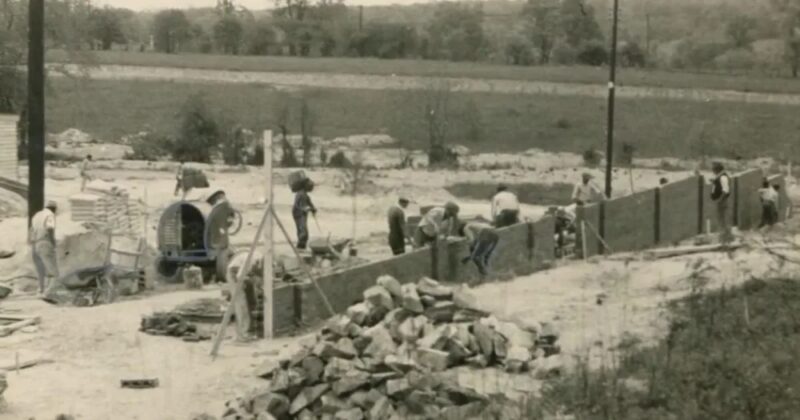Morgan State University 80-year-old segregation wall comes down in Baltimore
Share
Explore Our Galleries
Breaking News!
Today's news and culture by Black and other reporters in the Black and mainstream media.
Ways to Support ABHM?
Char Adams, NBC News
“We had no choice but to tear it down,” Morgan State University president said. “We couldn’t have this symbol of hate staring down every single day.”

For more than 80 years, Morgan State University students walking down Hillen Road near the school’s entrance saw a massive red brick wall. Some thought it was a simple alley; others thought perhaps it protected a few garages. But the structure was actually a “spite wall” intended to keep Black students from venturing into a once predominantly white Baltimore neighborhood.
Over time, the history of the wall faded into obscurity, its original intent known only by a few. But Wilson said the university doesn’t plan to ignore the past now that the wall is gone. Instead, he said, officials plan to keep a small part of the wall in place as a historical marker where students can learn about its dark history.
The wall was built along Hillen Road in front of the school’s entrance and stretching past Northwood Shopping Center in the early 1940s after years of debate and opposition. Residents and neighborhood associations in the predominantly white city already had qualms with the school when it moved to its current location in 1917, [University President David] Wilson said. The state’s decision to change what was then Morgan College from a private institution into a public one in 1939 to help Black people only “exacerbated” the racial strife, Wilson said. It happened as Baltimore began to adopt restrictive racial covenants limiting where Black people could live — Baltimore was among the first cities to adopt such practices.
Check out the original article.









Comments Are Welcome
Note: We moderate submissions in order to create a space for meaningful dialogue, a space where museum visitors – adults and youth –– can exchange informed, thoughtful, and relevant comments that add value to our exhibits.
Racial slurs, personal attacks, obscenity, profanity, and SHOUTING do not meet the above standard. Such comments are posted in the exhibit Hateful Speech. Commercial promotions, impersonations, and incoherent comments likewise fail to meet our goals, so will not be posted. Submissions longer than 120 words will be shortened.
See our full Comments Policy here.